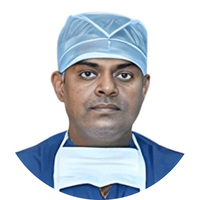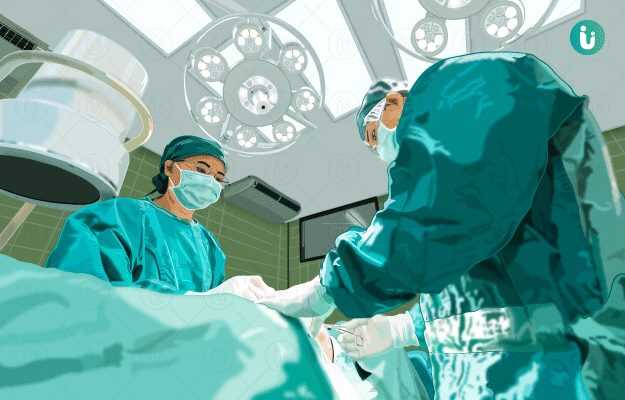Summary
Arthroscopy is performed to treat and diagnose joint conditions. In this procedure, the surgeon uses an arthroscope, a small video camera attached to a tube, to visualise the inside of joints. An arthroscopy also involves using narrow, pencil-shaped instruments to repair or remove part of the affected joints. You will have to fast for a few hours before the surgery. The procedure would be done under anaesthesia. The anaesthetist will decide which type of anaesthesia should be used. After the surgery, you should keep the wound clean and dry while it heals. The recovery period may vary depending on the type of surgery. The doctor will schedule your follow-up appointment after a few weeks to discuss further treatment if necessary.
- What is arthroscopy?
- Why is arthroscopy recommended?
- Who can and cannot get arthroscopy?
- What preparations are needed before arthroscopy?
- How is arthroscopy done?
- How to care for yourself after arthroscopy?
- What are the possible complications/risks of arthroscopy?
- When to follow up with your doctor after an arthroscopy?
What is arthroscopy?
Arthroscopy is a keyhole surgical procedure that is used to treat joints problems. The procedure is commonly carried out on the hip, knee, shoulder, elbow, ankle, and wrist joints.
In this procedure, an arthroscope, a narrow tube with a small video camera, is used to view inside the joint and diagnose joint problems. Along with this, other tools are inserted into the concerned joint to repair any damage. The tools used during this surgery are so small in size that they only require tiny incisions (cuts) in the skin as compared to open surgery (in which a large, single cut is made to perform the operation).
Some of the benefits of arthroscopy over open surgery are as follows:
- Shorter healing time
- Short hospital stay; mostly you will be discharged on the same day
- Less pain post surgery
- You can resume your routine more quickly
Your doctor may recommend this surgery when options like weight loss, painkillers, physiotherapy, and exercises to manage a joint condition have failed.
Are you also troubled by obesity and are not able to lose weight even after a lot of efforts, then start using myUpchar Ayurveda Medarodh Weight Control Tablet today and control your weight.
Why is arthroscopy recommended?
Doctors recommend an arthroscopy in individuals with the following symptoms:
- Joint pain
- Swelling around a joint or joints
- Joint stiffness
This surgery is also performed to check the damage in a joint that may have resulted from a sports injury.
You may need this surgery to treat the following joint conditions.
- Inflammation on the smooth lining of the joint (synovium) in the knee, elbow, shoulder, and ankle
- Cartilage (a tough, flexible type of tissue) damage
- Tears of the rotator cuff tendon (a group of muscles and tissue that support and allow the movements of the shoulder)
- Shoulder Impingement (pain in the shoulder that occurs due to an injury to the muscles in the shoulder area)
- Carpal tunnel syndrome
- Excess fluid inside the joint
- Chondromalacia or runner's knee in which the cartilage behined the kneecap gets damaged
- Frequent dislocation of the shoulder
- Anterior cruciate ligament tears that cause instability in the knee joint
- Frozen shoulder
- Temporomandibular disorder
What preparations are needed before arthroscopy?
Before the surgery, you will need the following preparation:
- Your doctor will perform a complete checkup of your joint and review your medical history. They may order the following tests before the surgery:
- Magnetic resonance imaging (MRI)
- X-ray
- Blood tests
- You will need to fast starting from midnight, the night before the surgery.
- if you take any medications, including alternative or non-prescription medications, share the list with your doctor.
- Your doctor may ask you to stop consuming blood-thinning medicines like aspirin before the procedure.
- Stop smoking for a few weeks before the surgery. This will help you to heal quickly and reduce the chances of complications during the surgery.
- If you drink alcohol every day, reduce your alcohol intake before the surgery. This will help you to recover fast.
- Inform your healthcare practitioner if you are allergic to any medications.
- You may be asked to lose some weight before the operation.
- You will need to arrange someone, a friend or a family member, to drive you home after the surgery.
- The doctor will need your permission for this surgery, for which you will need to sign a consent form.
How is arthroscopy done?
The surgery involves the following steps:
- The medical team will position you on the operating table. Depending on the joint, your position may vary. For example, in knee arthroscopy, you will be asked to lie on your back with your heels aligned to the edges of the table.
- The anaesthetist (a specialist who gives anaesthesia) will decide which anaesthesia is suitable for you. The following types of anaesthesia can be administered based on the joint to be operated.
- General anaesthesia: It will keep you asleep during the surgery
- Spine anaesthesia: A medicine will be injected inside your back to numb the lower region of your body.
- Local anaesthesia: The medicine will be injected in the area of surgery and only that part will be numbed. You may experience some sensation like tugging during the surgery.
- The skin above the joint to be operated on will be cleaned using an antiseptic solution.
- The surgeon will make a tiny cut on your skin near the joint to insert an arthroscope.
- Sometimes, a sterile solution is filled inside the joint to allow the surgeon to view the inside of the joint properly.
- The arthroscope will send live images that the surgeon will be able to observed on an attached screen.
- If the surgery is to repair the area, the surgeon will make multiple cuts in the joint to insert other surgical tools and a probe (a blunt-end surgical instrument used to explore the parts of the body).
- Using those tools, he/she will remove or repair the damaged tissues.
- Once the examination is complete and/or damage is repaired, the surgeon will remove the arthroscope and other instruments. Any extra fluid from the joint will also be removed.
- The surgeon will stich your skin on the operted and cover it with a bandage. The stitches will be removed in one to two weeks.
An arthroscopy takes about 30 minutes to two hours. You may allowed to go home on the same day of your surgery. However, if you were on general anaesthesia, you would be shifted to a recovery room and sent home the nexday. You may have a temporary splint, sling, or crutches to support your joint.
How to care for yourself after arthroscopy?
The recovery time may vary depending on which joint is involved. For example, an ACL repair may require four to six months to recover properly.
Once you are home, you will need the following care:
- Caring for the wound:
- Cover your dressing with a plastic bag while bathing or showering.
- Change the dressing immediately if it gets moist or falls out.
- You can cover the surgical area with ice wrapped in a towel for 15 to 20 minutes to reduce the swelling and pain. Make sure that the dressing does not get wet.
- Resuming work: You will need to wait for a week or two before resuming your work. This depends on various factors like the type of surgery or your job. For example, if you had a knee arthroscopy and your job involves squatting and climbing, you may resume work after two weeks, whereas if you have a sedentary job, you can start working a week after the surgery.
- Other activities:
- The doctor may advise you to avoid playing sports for a few weeks to months after the surgery. This usually occurs once you regain strength in your legs or have no swelling in your joints.
- You can resume driving if you do not have pain at the surgical site or when your doctor allows you to.
- Exercises: The doctor may recommend a few exercises for improving healing of your joint and help you use the joint well in the future. In knee arthroscopy, you may start with simple exercises like knee bend, knee hang, and static quad to help you heal faster. The doctor will give you all the instructions for the exercise. He/she may ask you to practice each one of them from anywhere between two to10 times a day.
When to see the doctor?
You should contact your healthcare practitioner immediately if you experience any of the following symptoms:
- Fever and chills
- Cough
- Shortness of breath
- Nausea or vomiting
- Chest pain
- Unbearable pain even after taking medicines
- Redness and swelling at the surgical site
- Fatigue
- Joint pain
- Release of foul-smelling fluid from the surgical area
- Numbness or a feeling of coldness in toes after a knee arthroscopy
- Severe bleeding from the surgical site
What are the possible complications/risks of arthroscopy?
The risks of this surgery are as follows:
- Infection inside the joints called septic arthritis
- Nerve, tissue, or blood vessel damage
- Blood clots in one of the limbs
- Swelling
- Bleeding inside the joints
- Allergic response to aneasthesia
When to follow up with your doctor after an arthroscopy?
You will need a follow-up a few weeks after the surgery to decide if further treatment is required for your joint.
Disclaimer: The above information is provided purely from an educational point of view and is in no way a substitute for medical advice by a qualified doctor.
Surgery Cost In Your City
Doctors for Arthroscopy

Dr. Manoj Kumar S
Orthopedics
8 Years of Experience

Dr. Ankur Saurav
Orthopedics
20 Years of Experience

Dr. Pritish Singh
Orthopedics
12 Years of Experience

Dr. Vikas Patel
Orthopedics
6 Years of Experience
References
- National Health Service [Internet]. UK; Arthroscopy
- Health direct [internet]. Department of Health: Australian government; Arthroscopy
- Stanford Healthcare [Internet]. University of Stanford. California. US; Conditions Treated with Arthroscopy
- World Health Organisation [Internet]. Geneva. Switzerland; Arthroscopes
- Beth Israel Lahey Health: Winchester Hospital [Internet]. Winchester. Maryland. US; Arthroscopy
- Better health channel. Department of Health and Human Services [internet]. State government of Victoria. Australia; Arthroscopy
- Guy's and St. Thomas' Hospital: NHS Foundation Trust [Internet]. National Health Service. UK; Physiotherapy after your knee arthroscopy
- Royal Berkshire Hospital [Internet]. NHS Foundation Trust. National Health Service. UK; Arthroscopy of the knee













